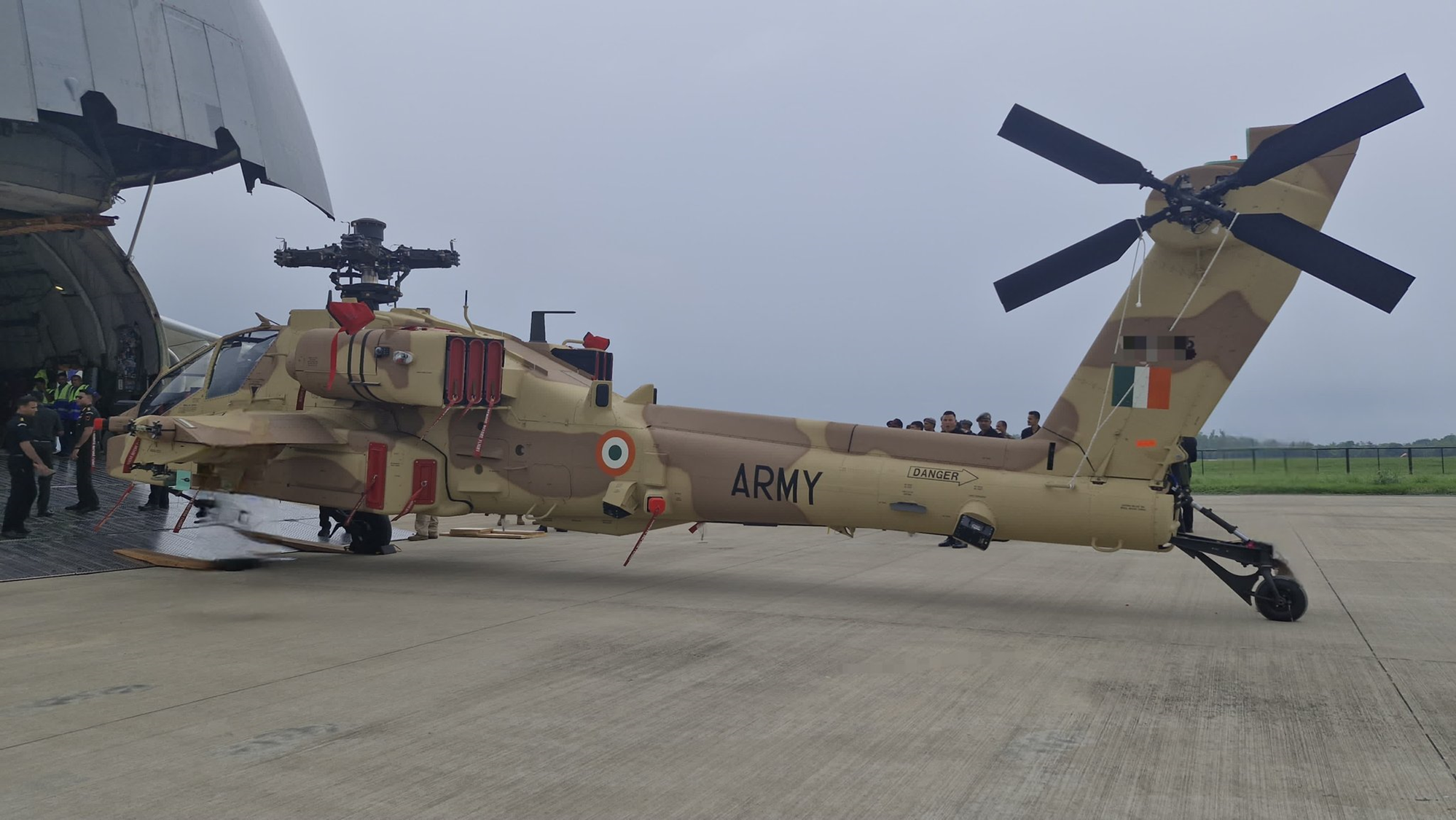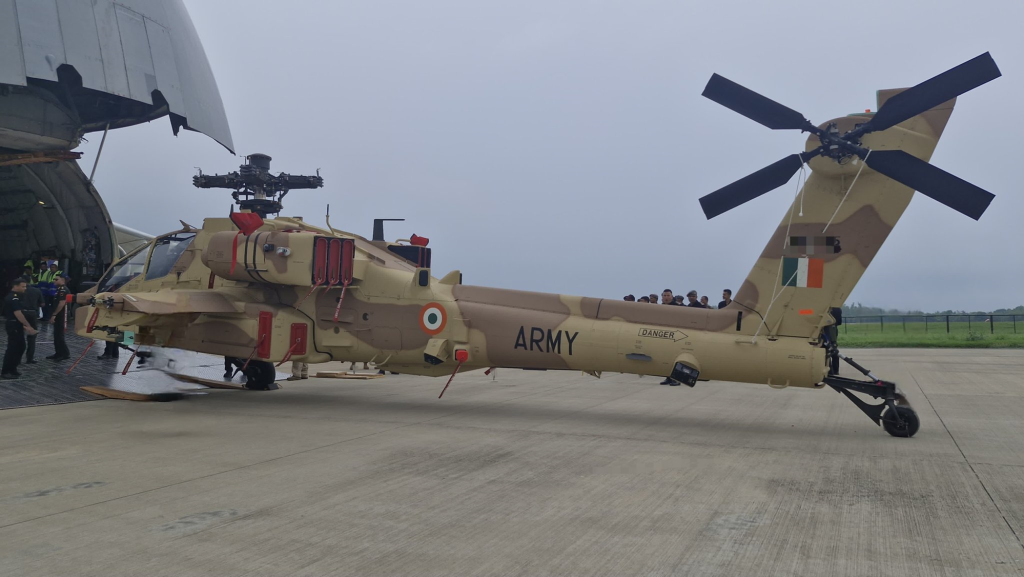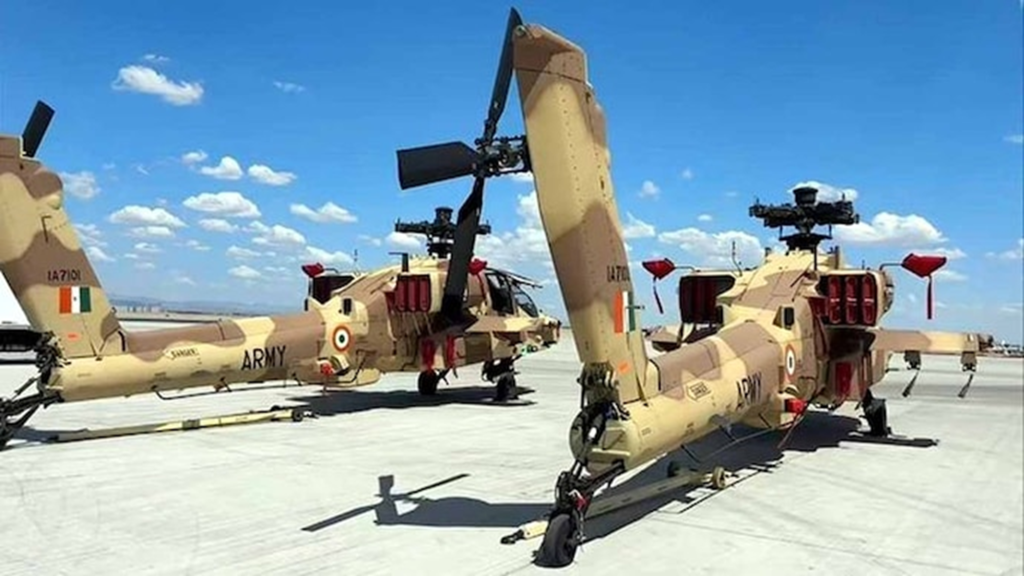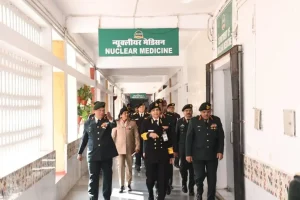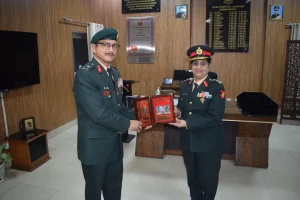The Indian Army has officially inducted its first batch of AH-64E Apache attack helicopters, often dubbed ‘Tanks in the Air’ or ‘Flying Tanks’, marking a transformational leap in its combat aviation capabilities.
Indian Army Gets ‘Tank In The Air’ Apache Helicopters
This move not only enhances the firepower and survivability of Indian ground forces but also signals a strategic shift in the Army’s control over battlefield aviation assets.
Arrival and Strategic Significance
On July 22, 2025, three US-made Apache helicopters were delivered by a Soviet-era Antonov cargo aircraft to the Hindon airbase near Delhi. These helicopters are the first of six procured specifically for the Army under a ₹5,691 crore deal ($600 million), originally signed in February 2020. After assembly and initial checks, the Apaches are being deployed to the newly raised 451 Army Aviation Squadron in Jodhpur, Rajasthan, a location of acute strategic value bordering the desert front with Pakistan.
This induction is particularly noteworthy because, until now, all attack helicopters in India were operated by the Indian Air Force (IAF). The Army’s independent control over Apaches ends this monopoly, enabling more responsive and direct support for ground operations, particularly tank-busting, close air support, and rapid armored warfare.
Apache AH-64E: Features and Capabilities
The AH-64E Apache stands among the most advanced attack helicopters in the world. Its battlefield reputation as a ‘flying tank’ is justified by a suite of armaments, survivability features, and advanced systems:
- Armament
- Avionics and Sensor Suite
- AN/APG-78 Longbow fire control radar mounted above the rotor for 360° coverage; allows target acquisition while remaining masked behind terrain.
- Multi-spectral targeting and sensor systems, including nose-mounted cameras for night vision and thermal imaging.
- Network-centric warfare capability: advanced communications and data links for integration with command centers and other assets.
- Survivability and Flexibility
Comparing Army and Air Force Apaches
| Attribute | Indian Army Apache (AH-64E) | Indian Air Force Apache (AH-64E) |
|---|---|---|
| Number Ordered | 6 | 22 |
| Deployment | Jodhpur (Western Front; Army HQ) | Ladakh, Western Sectors (Air Defence) |
| Mission Focus | Close air support, tank-busting, | Deep strike, air defence, |
| battlefield dominance | targeting radars/command posts | |
| Asset Control | Direct by Army Aviation Corps | Indian Air Force |
The Army’s Apaches are tailored for direct close support of armor and infantry in contested frontlines, complementing the IAF’s focus on deep-penetration strikes.
Timeline and Future Outlook
- 2015: IAF signs initial deal for 22 Apaches; deliveries completed by 2020.
- 2020: Indian Army signs contract for six Apaches.
- 2025: First batch of three Apaches delivered to Indian Army after COVID-and supply chain-related delays.
- By end-2025: Remaining three helicopters expected to join the fleet.
The Indian Army’s acquisition marks a new chapter in integrated air-land warfare for India, increasing tactical flexibility along high-threat borders—a necessity recognized during recent tensions with both Pakistan and China.
Broader Strategic Context
This delivery is part of a broader pattern of deepening India–US defense cooperation. The induction of Apaches comes on the back of high-level talks between India’s Defence Minister Rajnath Singh and US Secretary of Defense Pete Hegseth, focused on accelerating Apache deliveries and enhancing Indo-US military technology sharing.
Conclusion
The official entry of Apache ‘Tanks in the Air’ into Indian Army service is a milestone in India’s quest for battlefield superiority and force modernization. With unmatched firepower, survivability, and the ability to dominate across a range of missions, the Apaches will serve as a force multiplier—projecting deterrence, protecting frontline troops, and ensuring a technological edge in any future conflict along India’s western borders.
